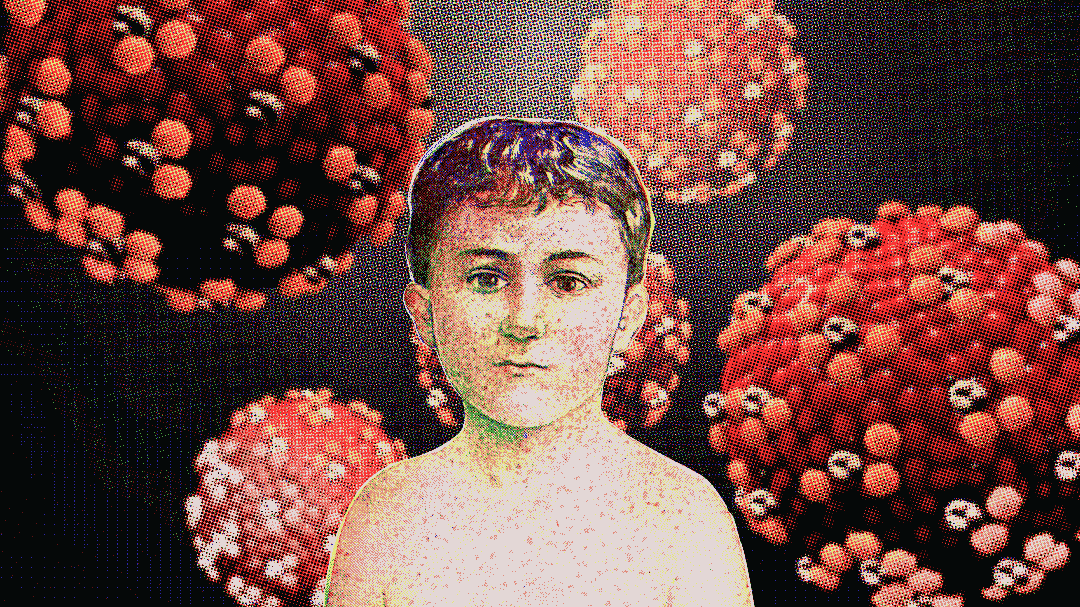
Illnesses such as measles, chickenpox, and mumps are diseases that should have never been underestimated or even complacent about. The year 2019 has been welcomed with panic as measles have alarming report of cases. According to Centers for Disease Control and Prevention (CDC), to date, five measles outbreaks in the US have already been reported, most of the population diagnosed with the disease are of children 10 years old or younger. In Asian countries such as the Philippines, its Epidemiology Bureau of Department of Health revealed 4,302 measles cases with 70 deaths.
Measles is a highly contagious respiratory disease caused by an airborne virus of the genus Morbillivirus in the paramyxovirus family. The virus resides in the nose and throat mucus of the infected person and spreads through coughing and sneezing. Measles is a disease of humans and is not known to occur in animals.
Transmission
Breathing in contaminated droplets (from cough or sneeze)
Touching a contaminated surface to which the droplets have settled and placing these hands near the nose or the mouth.
Signs and Symptoms

At Risk
Vaccine hesitancy is one of the reasons why there is an overwhelming case of measles. This is an odd fact because on the year 2000, it was globally acknowledged that the US eliminated measles through the use of vaccines.
Any non-immune person, someone who has not been vaccinated or was vaccinated but did not develop immunity, is at risk. Young unvaccinated children are at highest risk of measles and its complications, including death.
Countries experiencing, recuperating, or recovering from a natural disaster or conflict are particularly at a deadly risk when a measles outbreak occurs. There is a great risk of infection as damaged health infrastructure and health services interrupts regular immunization.
One should stay vigilant as risk factors include:
Being unvaccinated
Traveling internationally
Having a vitamin A deficiency
Treatment and Prevention
There is no specific antiviral treatment for measles virus. Supportive care that ensures proper nutrition, adequate fluid intake, and WHO-approved oral rehydration solution for dehydration treatment are done. Should further complications occur, proper antibiotics should be prescribed.
Global measles deaths were greatly eliminated in the year 2000 due to routine measles vaccination for children. However, reports for this year indicated that the number of people infected with measles climbs, a reason due to vaccine hesitancy, prompting vaccination. CDC recommends children to get two doses of the available MMR vaccine:
1st dose for infants at 12-15 months of age, and
2nd dose at 4-6 years of age
Note: Teens and adults are no exemptions and should be up to date with MMR vaccination
The severity of measles virus (MV) infection can be contained through vaccination. MV vaccines were prepared from either a live weakened wild type strain or an inactivated strain.
When a specific virus has been weakened (for attenuated vaccine types), this can be further propagated to reach high viral titer through adherent cell culture. One of the most common cell lines used to produce this virus are VERO cells. These cells are adherent cells that needs a surface to attach to in order to grow and proliferate. Once cells have attached to the surface and have reached 70-80% confluency, the weakened virus will be transfected to increase viral titer. After culture, the virus will be harvested and purified to become an attenuated vaccine.
For inactivated vaccines, the chosen stable adherent cell line will be used to grow and infected with the virus. Once the virus strain has been effectively grown, it will be harvested and inactivated through heat, chemicals, radiation, or antibiotics. The virus won't be able to replicate but the immune system is able to recognize it and attack it in the future.
Since high viral titers are needed for producing the vaccine, bioreactors are a great system for this application. Linearly scalable Tide Motion bioreactors can grow 5 billion VERO cells. With higher cells comes higher viral titers.

References:
Center for Disease Control and Prevention (2019, February 22). Measles vaccination. Retrieved from https://www.cdc.gov/measles/vaccination.html
Center for Disease Control and Prevention (2019, February 22). MMR (Measles, Mumps, & Rubella) VIS. Retrieved from https://www.cdc.gov/vaccines/hcp/vis/vis-statements/mmr.html
Department of Health (2019, February 22). DOH declares measles outbreak in NCR. Retrieved from https://www.doh.gov.ph/node/16645
Department of Health (2019, February 22). DOH identifies vaccine hesitancy as one of the reasons for measles outbreak. Retrieved from https://www.doh.gov.ph/node/16721>
World Health Organization (2019, February 22). Measles. Retrieved from https://www.who.int/news-room/fact-sheets/detail/measles
21 Changi South Street 1
Singapore 486777
Telephone: +65 6542 0833
Email: [email protected]
About Measles
Measles is a highly contagious airborne disease. It starts with fever, runny nose, cough, conjunctivitis, and sore throat.
Source: https://www.cdc.gov/measles/index.html
About Tide Motion Bioreactors
Tide Motion pertains to the gentle oscillation of culture medium into and out of the matrix vessel that intermittently exposes the cells to aeration and nutrition. The upward oscillation exposes the cells to nutrition, while the downward oscillation exposes the cells to aeration. At the same time, this process washes away products and wastes. This oscillation produces no air bubbles and low shear stress. View a range of products at http://www.vaccixcell.com/tide-technology/
About Esco VacciXcell
Esco VacciXcell is the bioprocessing division of Esco Group of Companies that specializes in the marketing and manufacturing of bioprocessing equipment for cell culture.
Esco VacciXcell provides turnkey manufacturing solutions using its proprietary Tide Motion™ technology to help developing nations to be self-sufficient in the manufacturing, storing, distribution, and administration of vaccines and other biologics, thus providing a complete solution from Discovery to Delivery. For more information on VacciXcell, please visit www.vaccixcell.com